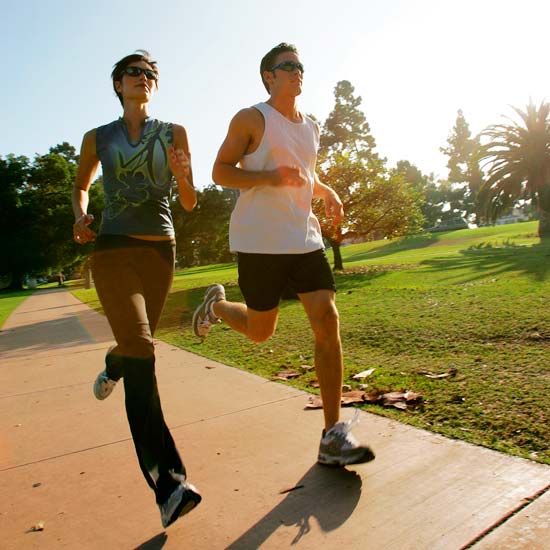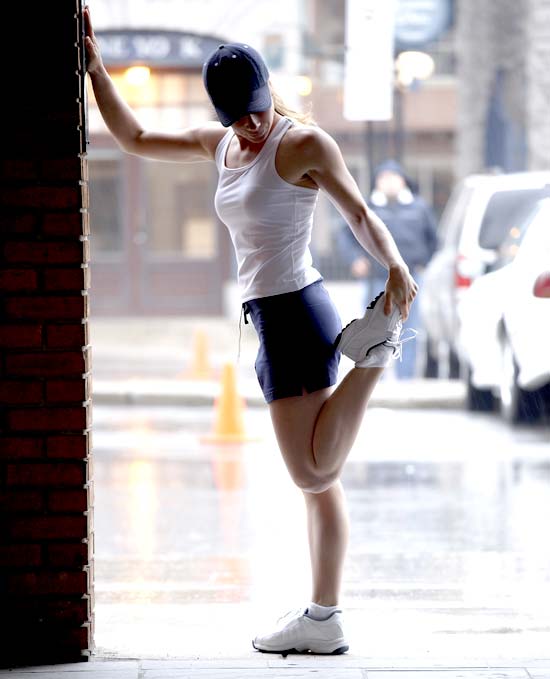Running is an aerobic exercise that requires a lot of oxygen. Runners should maintain a healthy breathing rhythm and technique to keep a steady running pace and power. The following are the main guidelines in proper breathing while running.
Know these 4 Breathing Styles
1. Shallow breaths
Breathing deep is important in maximizing oxygen input and lung expansion. However, you should also master short shallow breathing while you are running. You will not be able to increase your speed if you maintain long deep breaths while in motion.
However, you can take alternate long deep breaths and short shallow breaths to keep your pace to introduce enough oxygen to the body.
2. Breathing through the mouth
You can breathe either through your nose or mouth depending on which is more comfortable. However, breathing through the mouth helps you inhale more oxygen. This also promotes lung expansion and releases more carbon dioxide.
This breathing technique thus increases oxygen flow throughout the whole body.
3. Breathing from the stomach
This technique helps in increasing lung expansion and promotes more oxygen to the body. This allows the diaphragm to expand and in turn more oxygen enters the lungs.
However, this technique requires practice and should be mastered before going for a run.
4. Rhythmic breathing
Practicing correct breathing rhythms while in motion will maximise the workout. Proper breathing rhythm and pace should be achieved with every step.
This lets you maintain a steady pace while letting the body have enough oxygen.
There are proper breathing techniques before, during and after a run. People should not use incorrect breathing methods during these phases as it can have major disadvantages. The correct techniques during warm-ups, cool-downs and while in motion are the following.
Warm Up Breathing Exercises
Deep breathing
Only two thirds of the upper lung area is being used in most running exercises. However, filling the entire lungs with oxygen will help decrease anxiety and cramps while increasing the lung’s aerobic capacity. This is why deep breathing exercises or diaphragmatic breathing is essential before going for a run.
This increases the lung’s capacity to expand and hold oxygen during the exercise. Deep breathing is done slightly differently before running- inhale deeply through the nose and hold the air in, then slowly release through the mouth after a count of five.

Cleansing breathing technique
This breathing method was originally done during yoga exercises, but it provides positive results for runners before going for a run. The runner should alternately breathe through each nostril for a count of four. The right nostril should be closed with the person’s thumb to allow inhalation through the left nostril.
This should be done to both nostrils until maximum lung expansion is achieved. This breathing technique eliminates congestion in the sinuses and lets the runner breathe deeply.
Breathing Techniques while Running
Deep breathing
This breathing exercise is helpful before running and also while running. This expands the lungs and increases their capacity to absorb and keep oxygen. Deep breathing helps you avoid cramps and anxiety while in motion. You may also often feel tension in the shoulders and other body areas while running.
Deep breathing exercises help eliminate the tension and keep you relaxed. While running, deep breathing exercise means inhaling deeply through the nose and directly exhaling through the mouth.
You can exhale and shake your arms at the same time to release the tension. You may also breath through the mouth as it can be difficult to breathe through the nose during an intense workout.
Cadenced breathing exercise
This is a common breathing exercise used by athletes while running. This is where the breathing rhythm is synchronized with the running pace. Common cadenced breathing involves two steps for every inhalation and two steps for every exhalation.
This breathing technique also keeps your pace steady and smooth. However, beginners may not find this breathing technique easy, and their bodies may need to make some adjustments.
They can start with three steps for every inhalation and exhalation to help their lungs and whole body adjust to the oxygen absorption.
Cool Down Breathing Exercises
Deep relaxed breathing
Cooling down is the time when the body needs to relax and slow down. You should carry out deep and relaxed breathing during this phase. This helps the heart slow down and reduces adrenalin levels in the blood.
Slow breathing will also let the heart go back to its resting rate.
Slow breaths while resting
Resting is when the muscles are stretched and relaxed after intense running exercise. You should synchronize cool down exercises with your breathing. The lungs should rest from the extreme expansions.
Try to slowly fill your lungs, hold the air for a count of two to three and gradually exhale.
This helps to dissipate the body’s waste products from the exercise and reduces the possibility of fainting.

Benefits of Proper Breathing Techniques
Increased endurance
Using proper breathing techniques while running will increase a runners’ endurance. They are able to run for longer distances without lacking oxygen in their vital body organs.
This also improves body circulation thus resulting in good blood flow to the legs. This increases muscle strength while eliminating cramps.
Eliminates exercise-induced asthma
Exercise-induced asthma occurs during intense body workouts. The airways restrict and sometimes totally block air from going to the lungs because of overexertion.
Proper breathing introduces oxygen in a rhythmic method that does not add stress to the airways and other body parts.
Maximum body workout
Breathing properly lets the runner have the maximum benefits from the exercise. This lets the lungs, heart and other body parts absorb more oxygen. Good blood circulation that results in maximum output is also achieved through breathing techniques.
Proper breathing techniques will have a major effect on a runner’s overall performance. Breathing correctly will help prepare a person physically and mentally before the activity.
A runner’s chances of completing or even winning a race will mostly rely on the proper utilization of breathing techniques.





